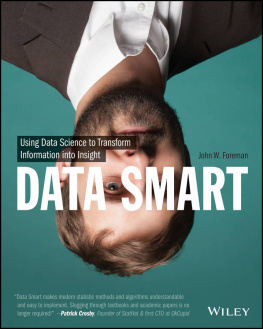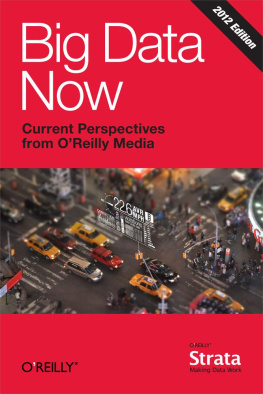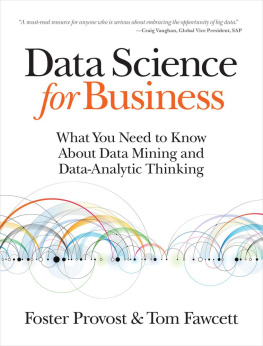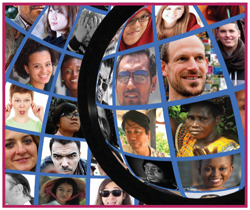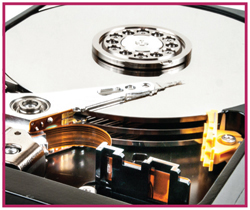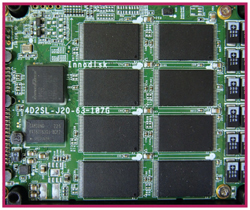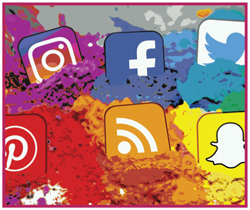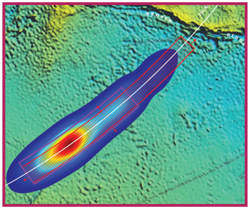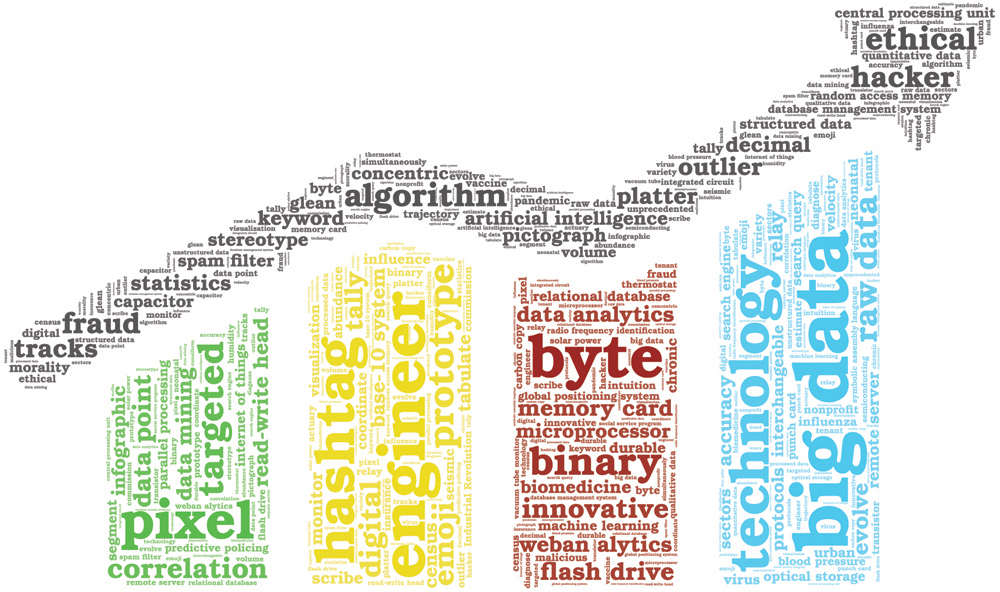Carla Mooney - Big Data: Information in the Digital World with Science Activities for Kids
Here you can read online Carla Mooney - Big Data: Information in the Digital World with Science Activities for Kids full text of the book (entire story) in english for free. Download pdf and epub, get meaning, cover and reviews about this ebook. year: 2018, publisher: Nomad Press, genre: Politics. Description of the work, (preface) as well as reviews are available. Best literature library LitArk.com created for fans of good reading and offers a wide selection of genres:
Romance novel
Science fiction
Adventure
Detective
Science
History
Home and family
Prose
Art
Politics
Computer
Non-fiction
Religion
Business
Children
Humor
Choose a favorite category and find really read worthwhile books. Enjoy immersion in the world of imagination, feel the emotions of the characters or learn something new for yourself, make an fascinating discovery.
- Book:Big Data: Information in the Digital World with Science Activities for Kids
- Author:
- Publisher:Nomad Press
- Genre:
- Year:2018
- Rating:5 / 5
- Favourites:Add to favourites
- Your mark:
Big Data: Information in the Digital World with Science Activities for Kids: summary, description and annotation
We offer to read an annotation, description, summary or preface (depends on what the author of the book "Big Data: Information in the Digital World with Science Activities for Kids" wrote himself). If you haven't found the necessary information about the book — write in the comments, we will try to find it.
What is big data and what does it have to do with you?
Have you watched videos online today? Did you post photographs on social media? Did you upload your English essay to Google docs?
All of these questions are questions about data. Data is information. It can be stored in books, magazines, on graph paper, in computers, and with many other methods. Most of the data that exists today is stored in computers, and the amount of data humans produce is doubling every year and half. Thats why its called big data!
In Big Data: Information in the Digital World with Science Activities for Kids, one of four titles in the Technology for Today set, kids ages 10 to 15 explore the definition of data and learn about the relationship between data, computers, and people. They learn about the history of data, the transition from paper to computers, and the role that search engines such as Google play in handling data. Data management, data analytics, and the history of computers are all topics covered in this book on big numbers for kids.
Data is something computer scientists think about a lot. A computers capacity to function and perform is directly related to how much data it can store. A computer that cant store much data wont be very popular. As more and more of our daily lives become connected to computersschoolwork, watching movies on a laptop, paying for snacks with a debit cardcomputers are required to handle more and more data. New improvements in data storage mean that there are fewer limits on the amount of data businesses can store, but what does that mean for users? How does data management make our lives easier? Do we need all of this information or are we storing data well never use again simply because we can?
Throughout Big Data, 25 STEAM investigations and experiments provide hands-on, problem-solving opportunities for students that incorporate various challenges and tools. Using readily available household items and recycled materials, each activity will take the reader through an inquiry-based, open-ended investigation that leaves plenty of room to explore individual creativity. With essential questions, fun facts, and links to online primary sources and videos, kids will mine the topic of big data and become better, more informed digital citizens of the world!
In the Technology for Today set, readers ages 10 to 15 explore the digital landscapes of today and tomorrow through hands-on STEAM activities and compelling stories of how things work, who makes them work, and why. Titles in this set include Industrial Design: Why Smartphones Arent Round and Other Mysteries with Science Activities for Kids; Big Data: Information in the Digital World with Science Activities for Kids; Projectile Science: The Physics Behind Kicking a Field Goal and Launching a Rocket with Science Activities for Kids; and Artificial Intelligence: Thinking Machines and Smart Robots with Science Activities for Kids.
Nomad Press books integrate content with participation. Common Core State Standards, the Next Generation Science Standards, and STEM Education all place project-based learning as key building blocks in education. Combining content with inquiry-based projects stimulates learning and makes it active and alive. Nomads unique approach simultaneously grounds kids in factual knowledge while allowing them the space to be curious, creative, and critical thinkers.
Carla Mooney: author's other books
Who wrote Big Data: Information in the Digital World with Science Activities for Kids? Find out the surname, the name of the author of the book and a list of all author's works by series.

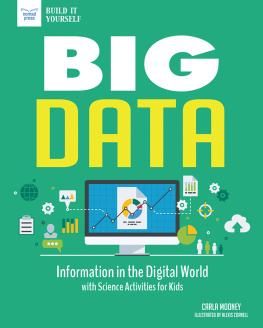
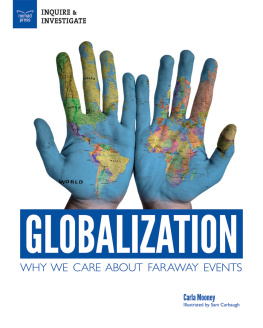



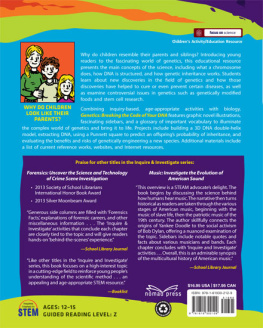


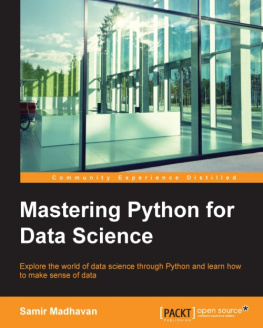
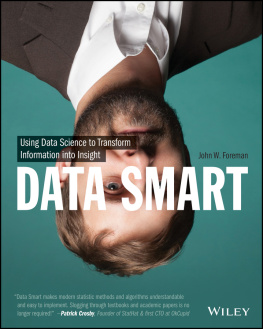
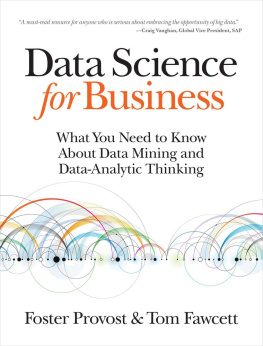

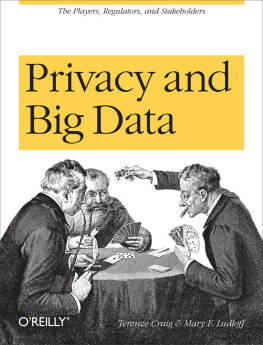
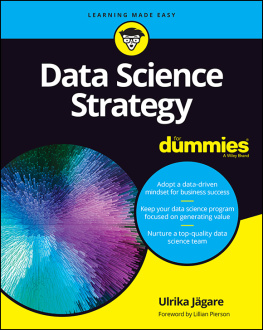
![EMC Education Services [EMC Education Services] - Data Science and Big Data Analytics: Discovering, Analyzing, Visualizing and Presenting Data](/uploads/posts/book/119625/thumbs/emc-education-services-emc-education-services.jpg)
